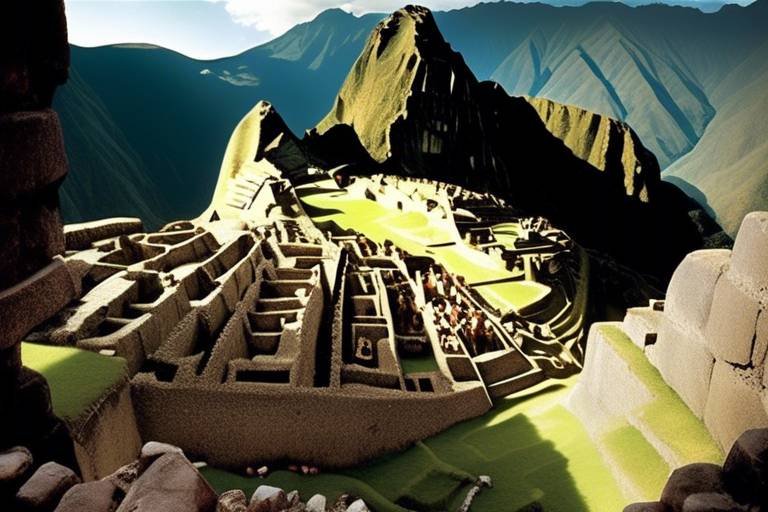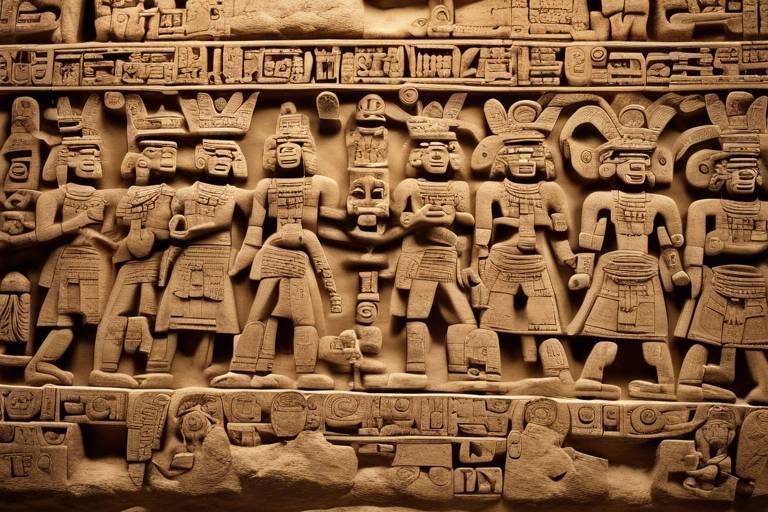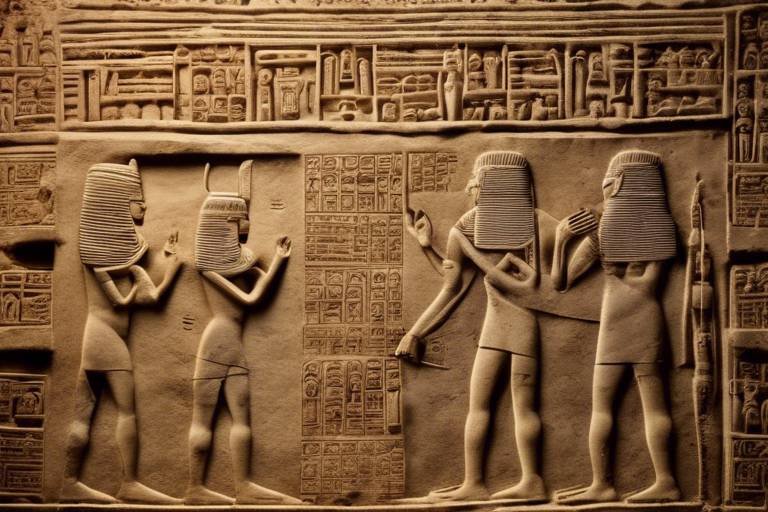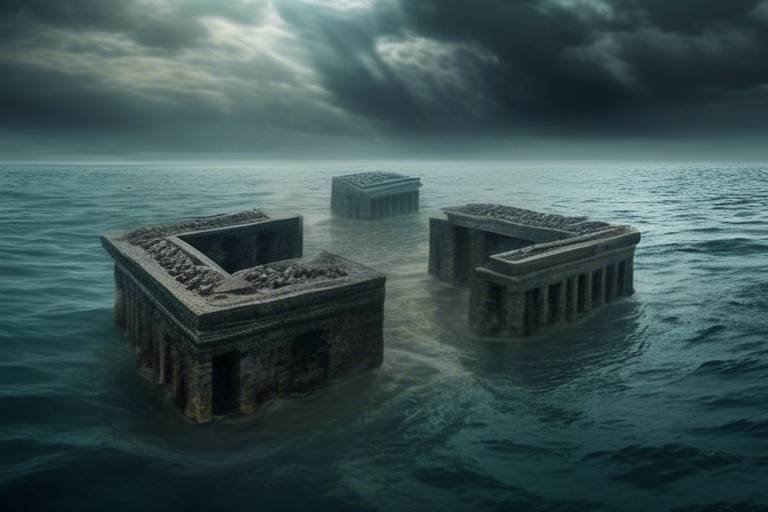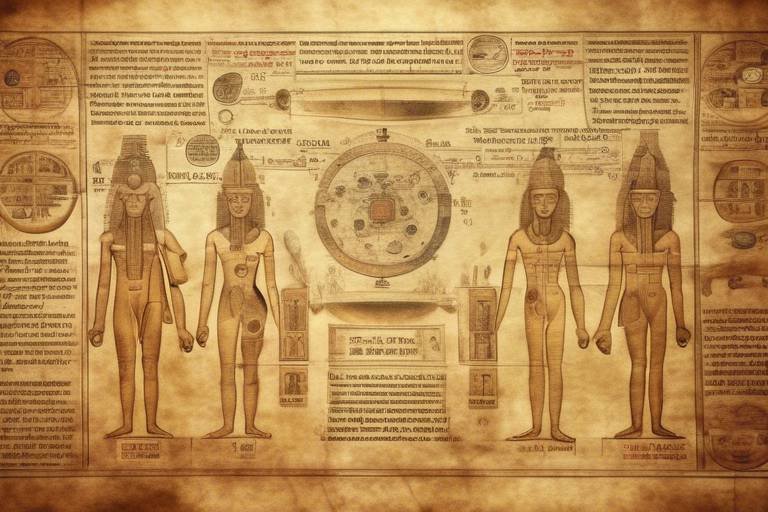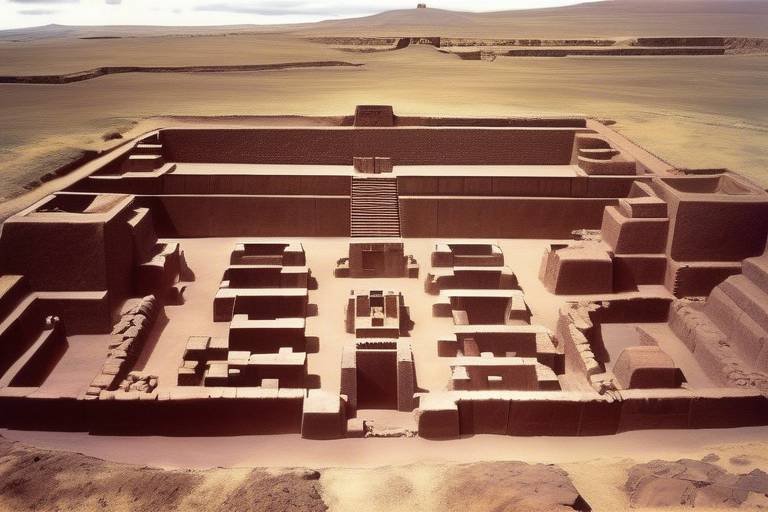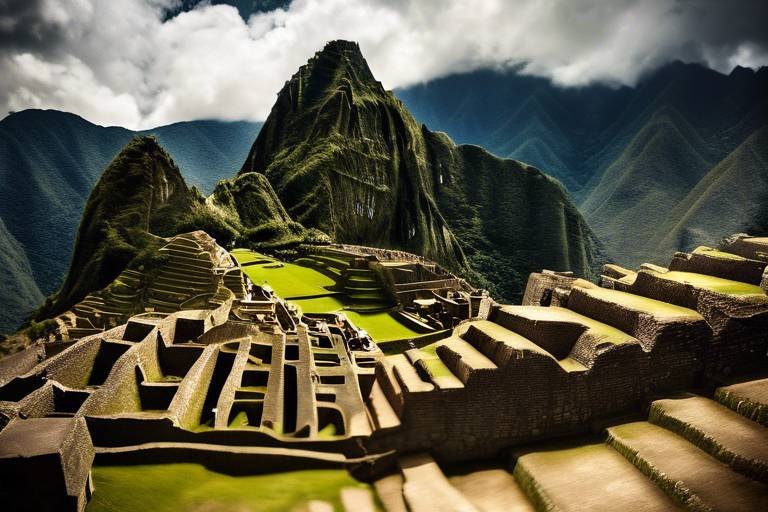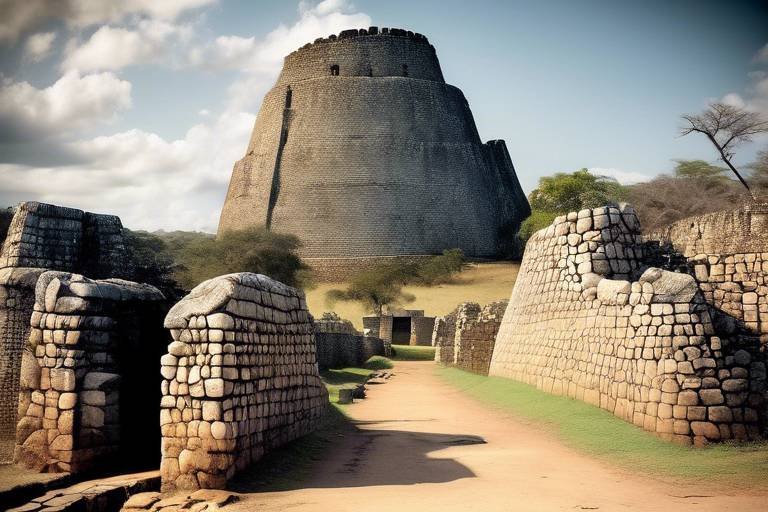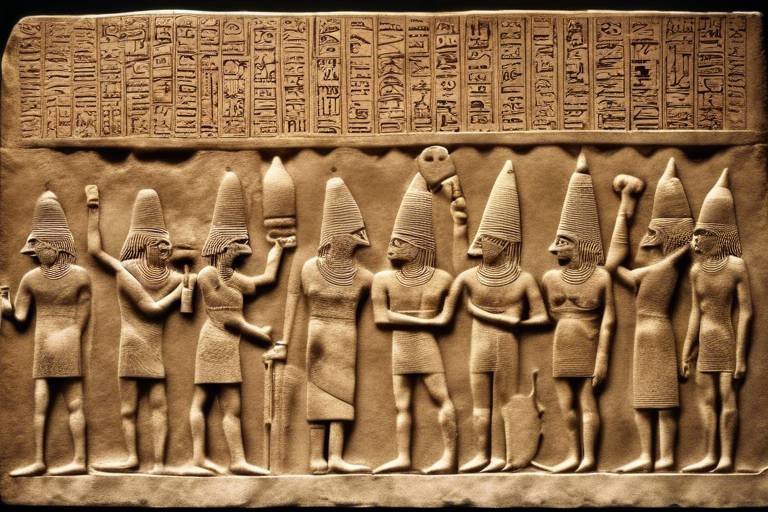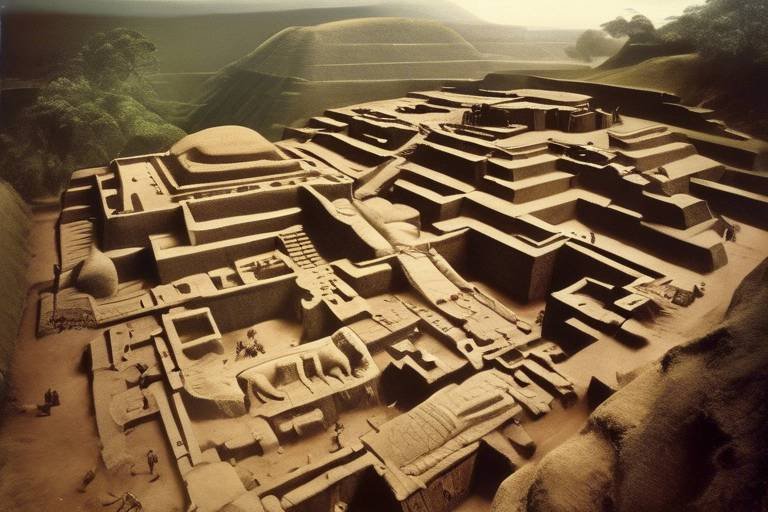The Secrets of the Prehistoric Civilizations of Europe
Embark on a fascinating journey through time as we uncover the secrets of the prehistoric civilizations that once thrived across the vast expanse of Europe. These ancient cultures, shrouded in mystery and intrigue, have left behind a legacy that continues to captivate historians, archaeologists, and curious minds alike.
Imagine standing in awe before the towering megalithic monuments scattered throughout the European landscape, such as the iconic Stonehenge and the enigmatic Newgrange. These colossal structures, built with precision and purpose, offer a glimpse into the advanced astronomical knowledge and spiritual beliefs of our prehistoric ancestors.
Delve into the depths of dark caves adorned with intricate paintings that tell stories of hunting expeditions, rituals, and mythical creatures. The cave art found in locations like Lascaux and Altamira showcases the artistic prowess and symbolic meanings that held significance in the ancient world.
As we journey through the annals of history, we encounter the rise of Bronze Age societies in Europe, characterized by intricate trading networks, skilled metalworking techniques, and complex social structures. These advancements laid the foundation for future civilizations to flourish and thrive.
Unravel the mysteries surrounding the enigmatic Beaker people, a prehistoric group known for their distinctive pottery, unique burial practices, and potential role in the spread of early metallurgy. Their cultural impact reverberates through the ages, leaving behind tantalizing clues to their origins and influence.
Step back in time to witness the Neolithic revolution that transformed ancient European societies, ushering in an era of settled communities, agricultural innovation, and the development of intricate social hierarchies. This period of change paved the way for the flourishing civilizations that would follow.
Explore the Vinča culture of Southeast Europe, an advanced civilization in the Balkans celebrated for its intricate pottery, bustling urban centers, and possible connections to the early spread of Indo-European languages. Their achievements speak to a society steeped in innovation and creativity.
Trace the migration patterns of early Europeans through genetic studies, archaeological findings, and cultural diffusion, unraveling the intricate web of interactions and movements that shaped the continent's diverse populations. Each migration tells a story of resilience, adaptation, and cultural exchange.
Reflect on the enduring legacy of prehistoric European civilizations, whose contributions to art, technology, and social organization continue to inspire and intrigue. The ongoing research and discoveries in this field shed new light on the rich tapestry of Europe's ancient past, ensuring that these secrets are never truly lost to time.

The Megalithic Monuments of Europe
When it comes to the ancient mysteries of Europe, one cannot overlook the awe-inspiring megalithic monuments that dot the landscape, serving as a testament to the advanced knowledge and skills of prehistoric civilizations. These monumental structures, such as Stonehenge in England and Newgrange in Ireland, continue to captivate researchers and visitors alike with their sheer size and intricate construction.
The purpose behind these megalithic monuments remains a subject of debate among archaeologists and historians. Some believe that these structures were used for astronomical observations, aligning with celestial events such as solstices and equinoxes. Others suggest that they held ritualistic or religious significance, serving as sacred spaces for ceremonies and gatherings.
The construction techniques employed in building these megalithic monuments are equally impressive. The precise alignment of stones and the sheer effort required to transport and place massive blocks highlight the engineering prowess of ancient European societies. These structures stand as a testament to the ingenuity and creativity of our ancestors, showcasing their ability to work with the resources available to them.
Moreover, the presence of carvings, engravings, and symbols on some of these megalithic structures hints at a deeper level of symbolism and cultural significance. These intricate designs not only add to the mystery surrounding these monuments but also provide valuable insights into the beliefs and values of the people who built them.
Exploring the megalithic monuments of Europe is a journey back in time, allowing us to connect with the sacred landscapes and ancient wisdom of our predecessors. These monumental structures serve as a reminder of the rich cultural heritage that has shaped the continent and continue to inspire wonder and fascination in the modern world.

The Enigmatic Cave Paintings
The Enigmatic Cave Paintings of prehistoric Europe hold a mysterious allure that captivates archaeologists and art enthusiasts alike. These intricate artworks, found in caves such as Lascaux in France and Altamira in Spain, provide a window into the artistic abilities and symbolic meanings of ancient civilizations. The detailed depictions of animals, geometric shapes, and human figures offer insights into the spiritual beliefs, hunting practices, and daily life of our prehistoric ancestors.
Imagine standing in the dimly lit depths of a cave, surrounded by vivid paintings that have withstood the test of time for thousands of years. The skill and creativity exhibited in these artworks hint at a level of sophistication and cultural significance that challenges our modern perceptions of early societies. Each brushstroke tells a story, each pigment a symbol of a bygone era waiting to be deciphered.
Researchers speculate about the purposes behind these cave paintings - were they used for ritual ceremonies, storytelling, or as a form of communication? The enigmatic nature of these artworks sparks curiosity and invites us to delve deeper into the minds of those who created them. As we uncover more about the techniques and materials used in their creation, we gain a greater appreciation for the artistic achievements of prehistoric Europeans.
Some cave paintings exhibit a remarkable understanding of perspective and anatomical accuracy, challenging the notion that ancient peoples were primitive or unsophisticated. The intricate details and vibrant colors used in these artworks demonstrate a level of skill and creativity that transcends time, connecting us to our distant ancestors in a profound and awe-inspiring way.
Exploring these enigmatic cave paintings not only sheds light on the artistic talents of prehistoric Europeans but also provides valuable insights into their cultural practices, beliefs, and interactions with the natural world. As we continue to study and preserve these ancient masterpieces, we ensure that the legacy of our early ancestors remains alive and vibrant for generations to come.

The Bronze Age Societies
During the Bronze Age, societies in Europe experienced significant advancements in various aspects of civilization, shaping the course of history for generations to come. This period marked the emergence of sophisticated cultures characterized by their mastery of metalworking, intricate trading networks, and evolving social structures.
One of the defining features of Bronze Age societies was their expertise in working with bronze, a durable alloy of copper and tin. This technological innovation revolutionized the production of tools, weapons, and decorative items, enabling these ancient civilizations to thrive and expand their influence across the continent.
The development of extensive trading networks was another hallmark of Bronze Age societies in Europe. Through these networks, valuable commodities such as metals, ceramics, and luxury goods were exchanged over long distances, fostering economic growth and cultural exchange among different communities.
Social hierarchies played a crucial role in shaping Bronze Age societies, with distinct classes and roles emerging within these ancient civilizations. Elites held power and authority, overseeing the administration of resources and the organization of labor, while artisans and laborers contributed to the production of goods essential for society's functioning.
As these Bronze Age societies flourished, they laid the foundation for future cultures and civilizations to build upon. The legacy of their technological achievements, economic systems, and social structures endured through the ages, influencing the development of subsequent societies in Europe and beyond.

The Mysterious Beaker People
The Mysterious Beaker People were a fascinating prehistoric group that left behind a legacy shrouded in mystery and intrigue. Known for their distinctive pottery adorned with intricate designs, the Beaker people emerged during the late Neolithic and early Bronze Age periods, around 2800-1800 BCE. Their name derives from the bell-shaped beakers found in their graves, suggesting a unique burial ritual associated with their culture.
One of the most puzzling aspects of the Beaker people is their origins. The exact source of this enigmatic group remains a subject of debate among archaeologists and historians. Some theories propose that they migrated from the Iberian Peninsula, while others suggest a connection to the steppes of Eastern Europe. The Beaker culture's spread across western and central Europe raises questions about their role in the exchange of ideas, technologies, and traditions during this period of transition.
Moreover, the Beaker people were not only skilled potters but also adept metalworkers, known for their advancements in metallurgy. Their expertise in crafting bronze objects, such as tools, weapons, and ornaments, indicates a sophisticated understanding of metalworking techniques. This proficiency in metallurgy likely played a significant role in their interactions with neighboring societies and the development of trade networks.
Another intriguing aspect of the Beaker culture is their burial practices, which often involved the deposition of valuable items alongside the deceased. These grave goods provide insights into the social structure and beliefs of the Beaker people, suggesting a hierarchical society with distinct roles and statuses. The presence of prestigious items like copper daggers, gold jewelry, and amber beads in their tombs underscores the importance of wealth and status within their community.
Despite the mysteries surrounding the Beaker people, their cultural influence extended far beyond their time, leaving a lasting impact on subsequent European civilizations. The legacy of their pottery styles, metallurgical advancements, and burial traditions can be traced in the archaeological record, highlighting the enduring significance of this enigmatic group in shaping the cultural landscape of prehistoric Europe.

The Neolithic Revolution
The Neolithic Revolution marked a pivotal moment in human history, transforming ancient European societies in profound ways. This period, also known as the Agricultural Revolution, witnessed the shift from hunting and gathering to agriculture and animal domestication. Imagine the radical change as communities transitioned from nomadic lifestyles to settled farming villages, cultivating crops and raising livestock. This shift not only altered their way of life but also laid the foundation for complex social structures and the emergence of early civilizations.
During the Neolithic period, advancements in agricultural practices enabled communities to produce surplus food, leading to population growth and the development of specialized trades. Villages evolved into towns, and eventually into urban centers, fostering trade networks and cultural exchange. The domestication of plants and animals revolutionized food production, providing a stable food supply and allowing for the growth of larger, more organized societies.
One of the most significant innovations of the Neolithic Revolution was the invention of pottery, a crucial development that revolutionized food storage, cooking, and trade. The creation of pottery vessels allowed for the storage of surplus crops, preservation of food, and the development of new cooking techniques. This technological advancement not only improved daily life but also facilitated the expansion of trade and cultural interactions among different communities.
The Neolithic Revolution also brought about the establishment of social hierarchies and specialized labor roles within communities. As agricultural practices became more efficient, some individuals were able to dedicate their time to tasks other than farming, such as craftsmanship, trade, or governance. This division of labor contributed to the development of complex societies with distinct social classes, economic systems, and political structures.
Furthermore, the Neolithic Revolution sparked a cultural renaissance, leading to the creation of intricate art forms, religious practices, and symbolic rituals. The newfound stability provided by agriculture allowed for the flourishing of artistic expression, as evidenced by the rich artistic traditions of Neolithic societies. Cave paintings, megalithic monuments, and elaborate pottery designs reflect the creativity and spiritual beliefs of ancient Europeans during this transformative period.

The Vinča Culture of Southeast Europe
The Vinča culture, originating in Southeast Europe during the Neolithic period, stands out as one of the most advanced prehistoric civilizations in the region. Known for their intricate pottery adorned with geometric designs and symbols, the Vinča people displayed a high level of artistic skill and craftsmanship. These artifacts not only served practical purposes but also held symbolic significance, reflecting the cultural beliefs and spiritual practices of the Vinča society.
Archaeological excavations have revealed the presence of well-planned urban centers within Vinča settlements, indicating a complex social organization and a thriving community. The layout of these ancient cities suggests a structured society with specialized roles and a system of governance. The Vinča culture's urban development challenges the notion that early European civilizations were predominantly rural and nomadic.
Furthermore, the Vinča culture's extensive trade networks demonstrate their engagement with neighboring regions, facilitating the exchange of goods, ideas, and technologies. The discovery of Vinča artifacts in distant locations underscores their participation in long-distance trade routes and cultural interactions. This interaction likely contributed to the dissemination of Vinča cultural elements across Southeast Europe and beyond.
Some scholars suggest that the Vinča culture may have played a role in the spread of early Indo-European languages, based on linguistic and archaeological evidence. The presence of specific symbols and motifs shared among different cultures in the region supports the idea of cultural diffusion and the exchange of linguistic elements. This hypothesis highlights the interconnectedness of ancient societies and the impact of cultural exchange on language development.
In conclusion, the Vinča culture of Southeast Europe represents a significant chapter in the prehistoric history of the region, characterized by artistic innovation, urban planning, and cultural exchange. Their legacy continues to intrigue researchers and archaeologists, shedding light on the complexities of early European civilizations and their contributions to the development of human societies.

The Migration Patterns of Early Europeans
When discussing the migration patterns of early Europeans, we are delving into a fascinating journey of ancient populations across the continent. Through a combination of genetic studies, archaeological findings, and cultural diffusion, researchers have been able to unravel the intricate movements and interactions of prehistoric peoples.
One of the key aspects of understanding migration patterns is through the analysis of genetic data. By studying ancient DNA samples, scientists have been able to trace the origins of early European populations and track their movements over time. These genetic studies provide valuable insights into the migration routes taken by our ancestors and how different groups intermingled and diversified.
Archaeological evidence also plays a crucial role in piecing together the puzzle of early European migrations. Excavations of ancient settlements, burial sites, and artifacts offer tangible proof of human movement and cultural exchange. By examining the material remains left behind by ancient civilizations, researchers can map out the spread of populations and the development of distinct cultural traditions.
Cultural diffusion, the spread of ideas, beliefs, and practices from one group to another, further illuminates the migration patterns of early Europeans. Through the study of linguistic similarities, artistic motifs, and religious practices, scholars can trace the influence of different cultures on one another and uncover the connections forged through ancient trade routes and interactions.
Overall, the migration patterns of early Europeans reveal a complex tapestry of movement, adaptation, and cultural exchange that shaped the continent's diverse landscape. From the nomadic tribes of the Paleolithic era to the settled communities of the Neolithic period, each wave of migration left its mark on the genetic, archaeological, and cultural heritage of Europe.

The Legacy of Prehistoric Europe
As we delve into the depths of prehistoric Europe, we uncover a rich tapestry of civilizations that have left an indelible mark on the continent's history. The legacy of these ancient peoples resonates through the ages, shaping the art, technology, and social structures of future societies.
One of the most enduring legacies of prehistoric Europe lies in its artistic achievements. From the intricate cave paintings of Lascaux to the elaborate pottery of the Vinča culture, these ancient civilizations showcased a remarkable creativity and skill that continues to inspire awe today. The artistry of prehistoric Europeans not only reflects their cultural beliefs and practices but also provides valuable insights into their daily lives and spiritual worldviews.
Furthermore, the technological innovations of prehistoric Europeans have had a lasting impact on human development. The metalworking skills of Bronze Age societies laid the foundation for future advancements in metallurgy, while the agricultural practices introduced during the Neolithic Revolution revolutionized food production and settlement patterns. These early innovations paved the way for the complex societies and urban centers that would emerge in later periods.
Moreover, the social structures and organizational systems of prehistoric European civilizations have left a lasting legacy in the realms of governance and community organization. The hierarchical structures of Bronze Age societies and the trade networks established by early European populations set the stage for the development of political systems and economic interactions that would shape the course of history.
As we reflect on the legacy of prehistoric Europe, we are reminded of the resilience and ingenuity of ancient peoples who navigated a world of uncertainty and challenges. Their contributions to art, technology, and social organization continue to echo through the corridors of time, offering valuable lessons and insights into the complexities of human civilization.
Frequently Asked Questions
- What were the main purposes of megalithic monuments in prehistoric Europe?
Megalithic monuments in prehistoric Europe served various purposes, including astronomical observations, religious ceremonies, and marking important events like solstices. These structures were also likely symbols of power and authority within ancient societies.
- Why are cave paintings considered significant in understanding prehistoric cultures?
Cave paintings provide valuable insights into the artistic skills, spiritual beliefs, and daily lives of prehistoric Europeans. They offer a glimpse into the symbolic meanings, cultural practices, and storytelling traditions of ancient civilizations.
- How did the Neolithic Revolution impact early European societies?
The Neolithic Revolution brought about fundamental changes in ancient European societies by introducing agriculture, leading to the development of settled communities, trade networks, and the emergence of social hierarchies. This period marked a shift towards more complex and organized civilizations.
- What is the significance of the Vinča culture in Southeast Europe?
The Vinča culture was a sophisticated prehistoric civilization in the Balkans known for its advanced pottery, urban centers, and possible connections to the spread of early Indo-European languages. It represents a key cultural and technological development in the region during ancient times.





